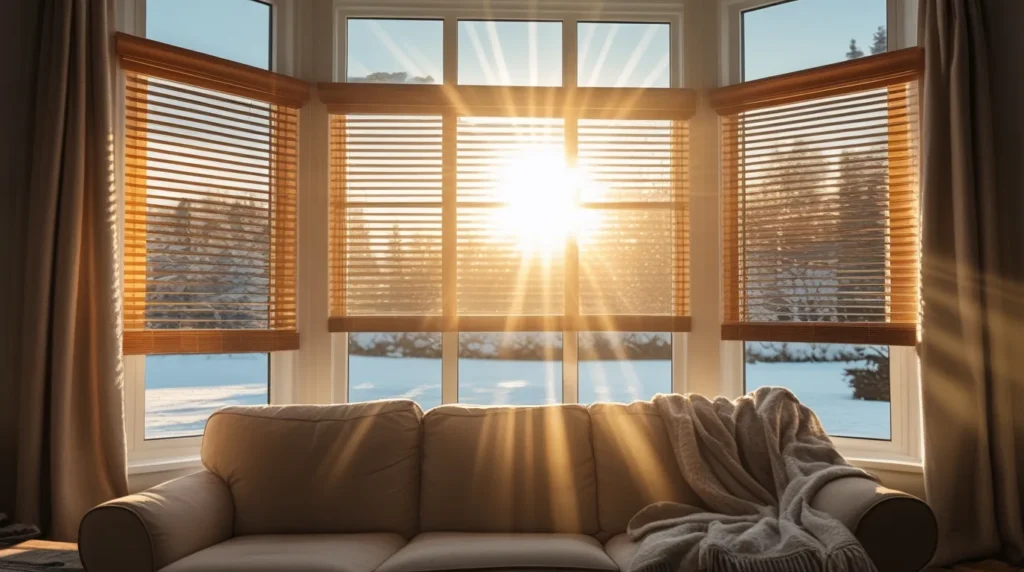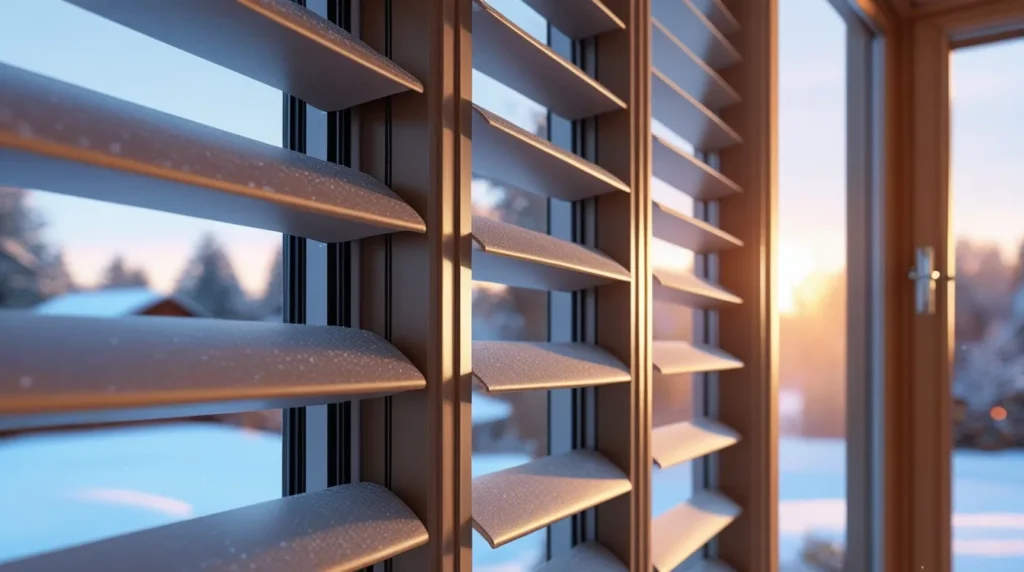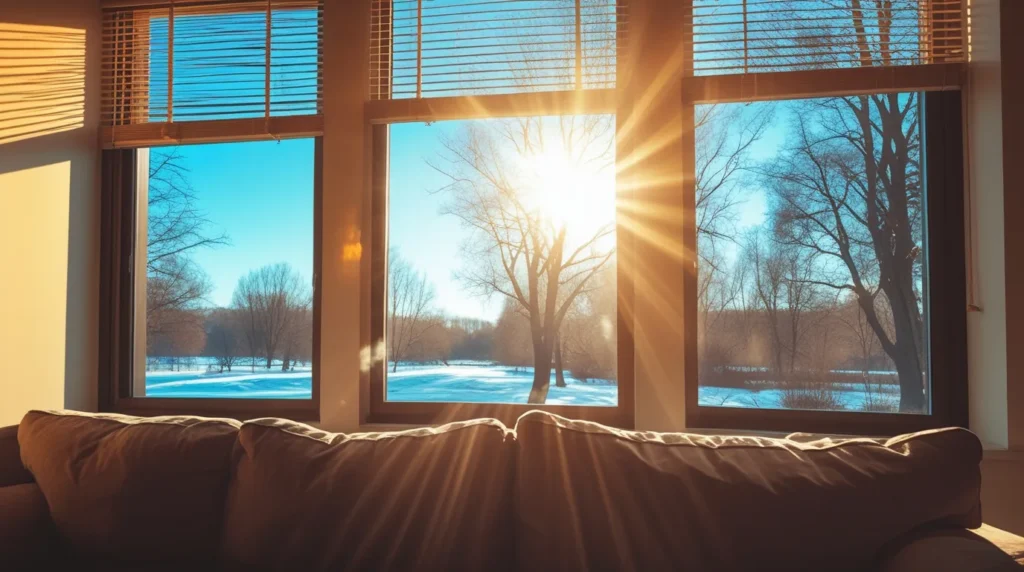Understanding seasonal blind positioning to improve comfort and efficiency
When cold weather hits, we start thinking about keeping our homes warm. We wear cozy clothes, sip hot drinks, and adjust the thermostat. But have you ever stopped to ask yourself which way to turn blinds in winter? It may seem like a small thing, but the direction you turn your blinds actually affects how warm or cold your home feels.
Yes—something as simple as tilting your window blinds the right way can help you save on heating costs, keep rooms brighter, and make your home more comfortable. This guide by Keystone Group LLC explains everything you need to know about using your blinds smartly during the colder months. And don’t worry—we’ve written this in simple language so that even a fifth-grader can understand.
Why Window Blinds Matter More in Winter Than You Think
Window blinds aren’t just for decoration. They do a lot of work—especially in winter. When it gets cold, windows can become weak spots in your home. They let in drafts, lose heat, and make your rooms feel colder. If you don’t use your blinds the right way, you might be losing more warmth than you think.
Blinds act like a second layer over your windows. When positioned correctly, they help trap heat inside and keep cold air out. They can also manage how much sunlight gets into your home during the day. That’s why knowing which way your blinds should face is more important than most people realize.
Blinds Up or Down? The Winter Heat and Light Dilemma

The most common question homeowners ask is: Should blinds be up or down in winter? The answer is: it depends on the time of day and what you’re trying to do—stay warm, let in light, or keep your privacy.
Here’s a quick rule of thumb:
- During the day: Open your blinds or tilt them upward to let sunlight in. Sunlight brings natural heat into your home.
- At night: Close your blinds and tilt them downward to keep heat inside and block cold drafts.
This simple action can help reduce heat loss through your windows.
Understanding the Purpose of Turning Blinds
Blinds aren’t just about privacy or light control—they also affect your home’s energy efficiency. When used the right way, they:
- Block cold air from entering
- Keep warm air from escaping
- Let in sunshine to naturally heat your rooms
- Reduce the need for artificial heating
- Offer privacy without losing warmth
The position of your blinds—whether up or down, tilted or flat—makes a real difference.
Which Way Should Blinds Face for Heat Retention?

To keep heat inside your home, your blinds should be closed and facing downward. That means the curved side of the blind slats faces the room, not the window. This position forms a tighter seal and acts as a barrier against cold air.
Some people think blinds facing up is better, but in winter, that’s not usually the case—especially at night when you want to trap every bit of warmth you can. The downward tilt reduces gaps between the slats and helps retain indoor heat.
Blinds Tilted Up or Down: What Works Best in Cold Weather?
Now let’s look closer at blinds tilted up or down.
Tilted Up
- Slats curve toward the window
- Good for privacy during the day
- Lets in more light from above
- Not great for blocking heat loss
Tilted Down
- Slats curve toward the room
- Offers better insulation
- Helps block drafts
- Best for nighttime in winter
So, if you’re still wondering which way to turn blinds in winter, the answer is: tilted down for heat and privacy at night, and slightly up for light and warmth during the day.
Blinds Closed Up or Down for Winter Nights?
Winter nights can get pretty chilly. This is when your blinds become most useful. You should always close them completely and tilt them down. Why? Because:
- They block cold air from entering your living space
- They help keep the warm air inside
- They offer privacy from outside lights and eyes
People often ask, which way should blinds close at night? The answer for winter is down—no question.
Should You Leave Blinds Open During the Day?

Yes—but only when the sun is shining. If sunlight enters your room, it brings natural warmth with it. During cold but sunny days, keep your blinds up or tilted slightly up to let in as much sunlight as possible.
However, once the sun starts to set, close them again to trap the heat inside.
This process—blinds up during the day, down at night—helps you stay warm while using less energy to heat your home.
Blinds for Privacy and Warmth on First Floors
If you live on the first floor, you want to stay warm—but also stay private. The good news is, you don’t have to choose between the two. Just tilt your blinds down.
This direction blocks the view from outside but still allows some light to filter through. It’s the best choice when you’re thinking about blinds up or down for privacy, especially in rooms facing sidewalks or streets.
Common Mistakes with Turning Blinds in Winter
Even in places like Pasadena, CA, where winters are mild, mistakes with blinds can lead to discomfort and higher heating bills. Here are a few things people often get wrong:
- Leaving blinds up all night – This lets cold air in and warm air out.
- Tilting slats the wrong way – Facing the curve toward the window doesn’t help with insulation.
- Not adjusting blinds with the sun – Sunlight is free heat. If you block it during the day, you’re wasting energy.
- Assuming blinds don’t matter – They may be small, but blinds can make a big difference in comfort and energy use.
Learning how to turn blinds in winter is easy—and it can save you money.
What Is the Correct Way to Turn Blinds for Different Needs?
Here’s a quick guide based on what you’re trying to do:
| Goal | Blinds Position |
|---|---|
| Keep Heat In (Night) | Closed, slats facing down |
| Let in Sunlight (Day) | Open or tilted slightly up |
| Block Glare | Closed, slats tilted down |
| Privacy | Closed, slats facing down |
| Allow Light but Stay Private | Tilt slats slightly up or partially open |
The key is flexibility—adjust blinds up or down based on time of day and temperature.
Final Thoughts: Which Way to Turn Blinds in Winter for the Best Results
During winter, turning your blinds the right way can help keep your home warmer and more comfortable. In the daytime, let in the sunlight by opening the blinds or tilting them slightly upward. At night, close them and tilt the slats downward to trap the heat inside and block the cold air. These small actions make a big difference. They don’t cost anything, but they help you save energy and feel more comfortable in your home.
At Keystone Group LLC, we care about making homes smarter and more efficient. Even in mild climates like Pasadena, CA, knowing how to use your blinds properly in winter can really pay off. It’s a simple step that works.
If you’re ready to make your home warmer and cozier this season, we’re here to help with expert advice you can trust.
